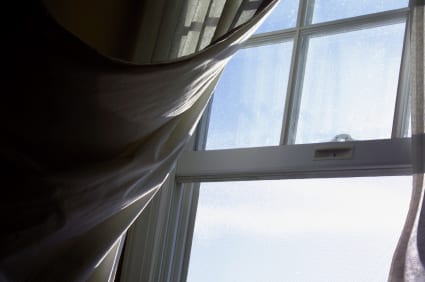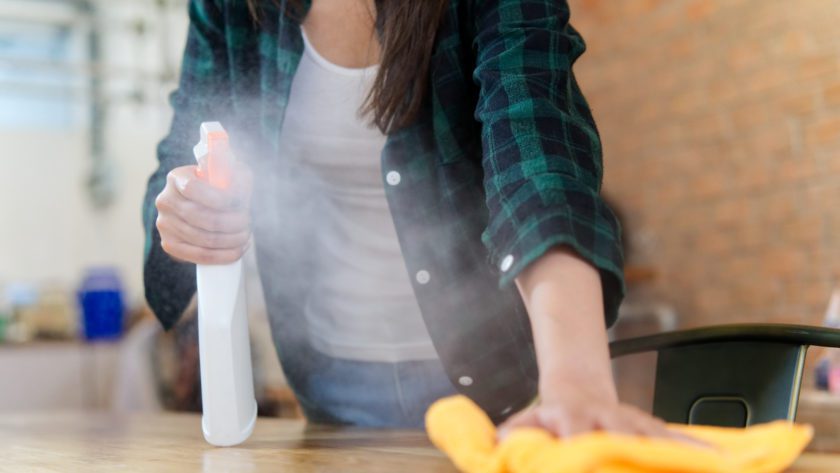After the CDC recommended the proper cleaning and disinfection of high-touch surfaces to help mitigate COVID-19, and suddenly there was a shortage of hand sanitizer and cleaning materials.
Meanwhile, since the beginning of March 2020, the daily number of calls to poison centers increased sharply, whereby exposures to both cleaners and disinfectants are the cause. Here are some guidelines on how to stay safe without being poisoned.
Chemical Exposures
According to the CDC, among all cleaner categories, bleaches accounted for the largest percentage of the increase in calls.
- Among disinfectant categories, non-alcohol disinfectants and hand sanitizers accounted for the largest percentages of the increase in calls.
- Among all exposure routes, inhalation represented the largest percentage increase in both cleaners (35%) and disinfectants (52%).
Case 1 (per the CDC report):
An adult woman filled a sink with a mixture of 10% bleach, vinegar, and hot water, and soaked her produce in this solution. She noted a noxious smell described as “chlorine” in her kitchen, then had difficulty breathing, was coughing, and wheezing, and called 911.
She was transported to the emergency department with a low blood oxygen level, but improved with oxygen and bronchodilators and was discharged after a few hours of observation.
Case 2 (per the CDC report):
A pre-school age child drank an unknown amount of alcohol-based hand sanitizer. She became dizzy, fell, and hit her head. She was poorly responsive.
Her blood alcohol level was elevated at 273 mg/dL or a blood alcohol concentration of 0.273, which is 3.4 times the legal limit for driving under the influence (.08 or 80 mg/dL).
Who’s Being Poisoned?
The highest percentage of exposures reported to U.S. poison centers between January through March 2020, compared to 2019 from disinfectants, are adults 60 years and older (42% increase).
In numbers, the 0-5 age group had the highest number of reports with nearly 8,200 reports (nearly 1,400 more than 2019).
Causes of Poisoning with Cleaners/Disinfectants
- Increased use overall
- Applying more than directed on the label
- Mixing multiple chemical products together
- Not wearing protective gear
- Applying in poorly ventilated area
1. Bleach + Ammonia = Chloramines (toxic gases)
Ammonia: Bleach (sodium hypochlorite active ingredient) reacts with ammonia to form chloramines (toxic gases). Ammonia is found in some glass cleaners.
2. Bleach + Acids = Chlorine Gas
Vinegar: When bleach reacts with an acid, a chlorine gas is produced. Chlorine gas exposure at low levels and for short periods can trigger a physiological reaction: coughing, breathing problems, burning and watery eyes, runny nose.
Chest pain, severe breathing difficulties, vomiting, pneumonia, and death are consequences of higher levels of exposure.
Other acids: some glass and window cleaners, automatic dishwasher detergents and rinses, toilet bowl cleaners, drain cleaners, rust removal products, and brick and concrete cleaners.
3. Bleach + Other Cleaners
Bleach reacts with some oven cleaners, hydrogen peroxide, and some insecticides.
Disinfectant Sprays — What you inhale is absorbed into your bloodstream
Inhalation (breathing) of gases, vapors, dusts or mists is a common route of chemical exposure. Chemicals can enter and irritate the nose, air passages and lungs.
They can become deposited in the airways or be absorbed by the lungs into the bloodstream. The blood can then carry these substances to the rest of the body.
Ingredient Disclosures Are Not Required
Commercial cleaning product manufacturers are not required to list all the ingredients on their labels.
WARNING! A product may contain a dangerous or untested chemical and consumers would be unaware of it.
Even worse, the Poison Center might have difficulty identifying the contents.
Until a chemical is tested and evaluated, or if the results are not publicly available, current laws recognize the chemical as “safe”.
MSDS – Do They Disclose All the Chemical Ingredients?
A Material Safety Data Sheet (MSDS) is a document that contains information on the potential hazards (health, fire, reactivity and environmental) and how to work safely with the chemical product, but you should know…
- The sheets can legally omit even hazardous chemicals if the company claims they are trade secrets.
- They are NOT required to list seriously and hazardous chemicals if they don’t account for a certain percentage of the product’s weight.
Lysol® Disinfectant Spray Ingredients
- Mipa-borate — May cause developmental/endocrine/reproductive effects.
- Ethanolamine — May cause respiratory effects, general systemic/organ effects; nervous system effects.
- Myristalkonium Saccarinate — May cause respiratory effects.
- Alkyl (50% C14, 40% C12, 10% C16) Dimethyl Benzyl Ammonium Saccharinate — .10-1.0%. A pesticide. May cause respiratory effects. Known to cause asthma in previously healthy people. Toxic to the aquatic environment with long-lasting effects.
- Petroleum gases (propane, butane) — Damage to DNA, lung irritation, cancer, developmental/endocrine/reproductive effects, lung irritation, cardiac arrhythmias.
- Fragrances — Lack of disclosure as to what can constitute a fragrance. These are synthetic aromas engineered by combining different chemical ingredients that may disrupt the hormone system.
- Ammonium Hydroxide — Acute aquatic toxicity; respiratory effects; damage to vision.
- Ammonium Gas — May cause respiratory effects, general systemic/organ effects, damage to vision, skin irritation/allergies/damage.
Many of the commercial disinfectant sprays and room fresheners contain propellants which are easily inhaled into the lungs then circulate throughout the body.
Propellants also irritate the lungs and may cause an irregular heart rhythm when inhaled at high concentrations.
Known to the State of California to Cause Cancer
Some disinfectant sprays contain ortho-phenylphenol (a.k.a. 2-Phenylphenol, o-phenylphenol). This chemical is considered hazardous:
- Acute oral/dermal toxicity
- Skin corrosion/irritation
- Serious eye damage/irritation
- Target organ: respiratory system

![]() Karen’s Fit Tip: Not only are disinfectants and cleaners toxic to germs, they can also be toxic to people.
Karen’s Fit Tip: Not only are disinfectants and cleaners toxic to germs, they can also be toxic to people.
Read the labels, know what’s in them, use them properly, and don’t mix them. Limit the use of disinfectant aerosols and air sanitizers. You’ll end up with a chemical cloud in your home that can do more to harm to your health than it can to extinguish germs.

Try to brave the chill, heat, and humidity and clean the air naturally in your home.
Open up doors and windows as frequently as possible to encourage cross ventilation.
Still pay attention to the air quality advisory in your area when opening up the windows.





